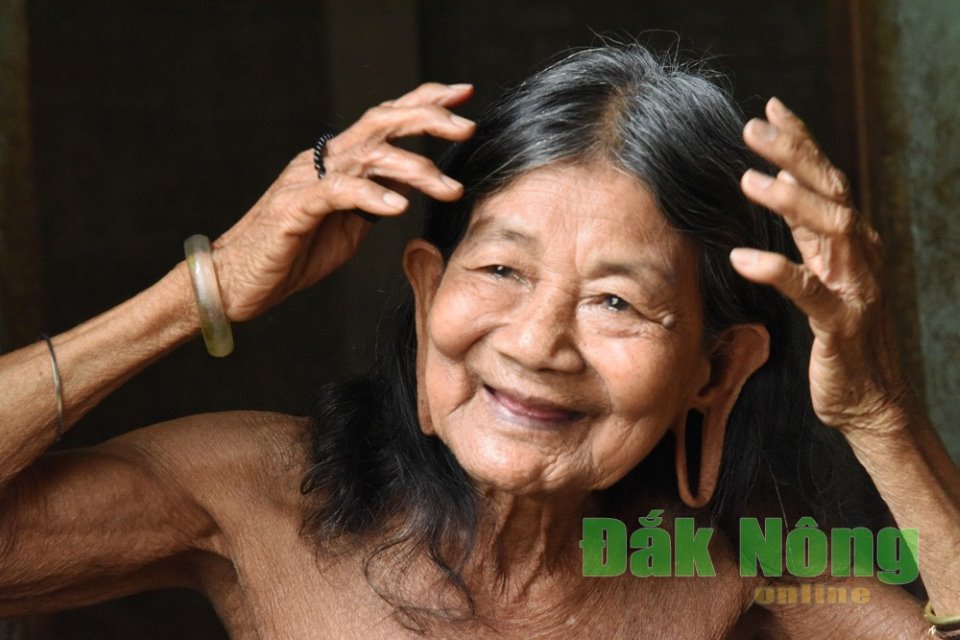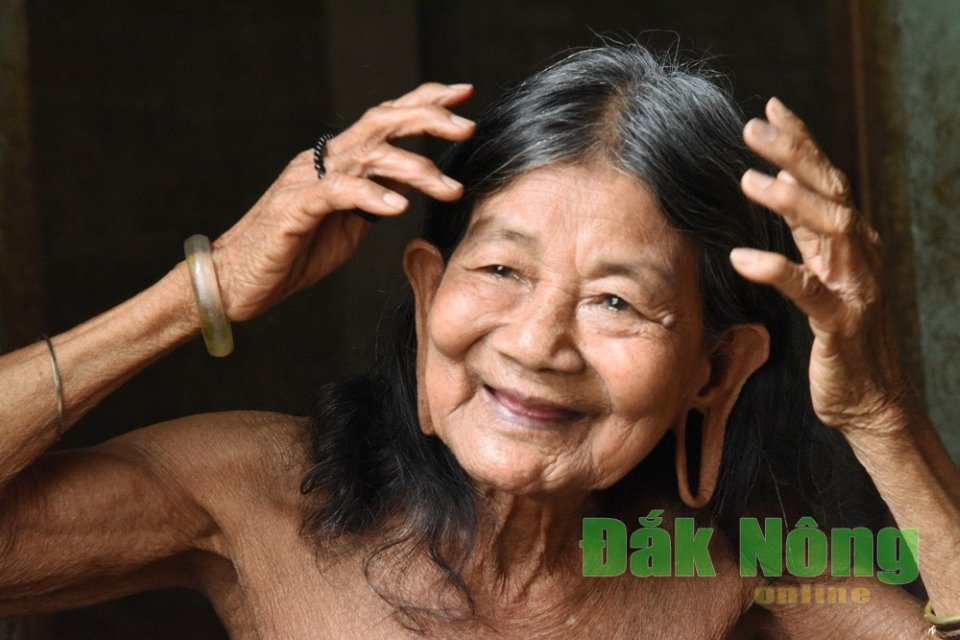
Stretching earlopes to wear jewellery, especially ones made from bamboo or ivory used to be a long standing custom of the ethinic groups of M’nong and Ma. Those who practiced this custom are called “nguoi tai se”, meaning a human with stretched earlopes.
Obviously, people had to spend a lot of time to have such stretched earlopes. At first, ones would use a thorn picked from a lemon tree in order to pierce a hole on each of their earlople. The lemon thorn was kept intact at the pointed end but its outside skin is removed. Before piercing the earlopes, ones would have to squeze and massage their earlopes with the help of cooled boiled water mixed with ginger untill they turned soften and loosen up. The pierced holes must be done right at the center of the earlopes, otherwise, the streched earlopes would not possibly attain their maximum of size. Once the pierced holes had healt up, ones would turn and revolve the thorns deeper into the earlopes. This step of revolving the thorns would be repeated every day, once a day until the bigger end of the thorns could pass through the pierced holes on the earlopes.
Then, ones would whittle other twigs, also with a small end and a bigger end, yet again put them through the pierced holes and continued with the step of revolving the whittled twigs through the earlopes, the same way as with the thorns, day after day. Once the bigger ends of the twigs could passed through the holes, they would be replaced by the bigger ones, which results in earlopes increasingly streched and being able to carry such jewellry as those made from wood, bamboo, or ivory.
 |
| The portrait of Mrs H'Yo in Ka La Dong village, Quang Khe commune, Dak Glong district. |
Women who were rich or well-off used to carry earings made from ivory. They used two pieces of ivory as earings, making their ears strech to their cheekbones.
However, the custom has now faded with the passing of time. At present, in the village of Ka La Dong, Quang Khe (Dak Gong), 3 women were still found practicing the custom, including: Mrs H'Glang, aged 93; Mrs H'bing, aged 76 and Mrs H'Yo, aged 82. Those are the last people called "nguoi tai se" in the High land of M'nong, who still keep the marks of ancient jewelleries of human, from thousands of years away from now. The earlopes of old woman H'Yo, which stretches to the edges of her shoulders with comparatively wide holes, proves her past time of owning precious jewellry and way of self-embellishment associated with the communities in the old time.
Mrs H'Glang though the oldest of the 3 streched - earloped women, still has bright - glinted eyes and beautiful smile, making her face alight with kind-hearted nature.
Mrs H'Glang still keeps a lot of ancient jewellery such as ring, bronze bracelets, beaded necklaces.
Though having such special earlopes, these women have long not worn earings, for the traditional earings made from small bamboo cylinder, ivory and dyed strings had long sinked into oblivion among people of their communities. Also, the earings made from ivory usually considered the most precious possession of people in ethnic minorities have not their belongings any more, for most people in these communities had sold them to antique or ethinic object hunters. These days, such jewellery are found mostly in the display windows placed at the museums of the Central Highland area.
The image of elderly people wearing tube-shaped bangles around their wists or legs are usually of an attraction to photographers who are looking for the identity features of the communities. The elderly women with stretched earlopes in the Highland of M'nong now still receive frequent visits from photographers who come with a real inspiration from their adventure to search for the beauty, and the uniqueness of the Central Highland. Raising above all, it's photographers who must be quick enough to travel to such secluded and remote villages, to catch and take into the lens of their cameras the images of the last elderly women remaining the trace of such custom on their bodies before they come to gather with the god.
Source: http://baodaknong.org.vn/lich-su-van-hoa/tap-quan-cang-dai-tai-cua-nguoi-m-nong-ma-57018.html